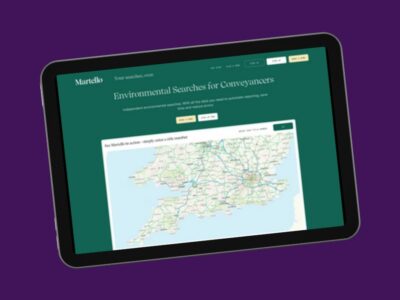SuDS: Biodiversity Net Gains could become Mandatory for Developers
The Government is consulting on proposals to place the environment at the heart of new development. This builds on the promises in the legislative updates and the recently published 25 Year Plan. Sustainable Drainage Systems (SuDS) provide a key part of the answer.
Michael Gove, Secretary of State for the Environment, has announced that developers could be required to deliver a ‘biodiversity net gain’ when building new housing or commercial development. This means habitats for wildlife must be enhanced and left in a measurably better state than they were pre-development.
The plan, applying to developments covered by the Town and Country Planning Act in England, is in a recently launched consultation running until 10 February 2019. Where green improvements, like tree planting or drainage ponds, were not possible, developers could be charged a levy to pay for habitat creation or improvement elsewhere.
Building Biodiversity into Scheme Design
The proposed new rules require developers to assess the type of habitat and its condition before submitting plans. Early planning would allow for Biodiversity Net Gain measures to be integrated into the design, programme and budget of schemes, reducing the cost and ultimately generating long-term benefits for nature and society.
Developers would be required to demonstrate how they are improving biodiversity. These could be the creation of green corridors, planting more trees, or forming local nature spaces, such as SuDS features like ponds and swales.
In the rare circumstance that this could not be included, developers would have to pay a levy for habitat creation or improvement elsewhere.
Some developers have already been following a biodiversity net gain approach voluntarily. The Berkeley Group has committed to creating a net biodiversity gain within all their development sites. They are currently working with London Wildlife Trust to build Kidbrooke Village in East London – a new 4,800 home village development that contains 20 hectares of parkland.
Warwickshire County Council has trialed and implemented a system to ensure all developments lead to no net loss of biodiversity, with each development preparing an impact assessment prior to building.
SuDS are in the Government’s Focus
A standardised, mandatory approach would ensure that developers have certainty on measures they can implement to improve the environment.
SuDS are an immediate answer that can be well integrated into schemes, with many proven examples of how it enhances quality of life for residents and wildlife alike.
This is the first step in the Government’s ambition to embed the wider principle of ‘environmental net gain’ in development. They seek to drive measurable improvements for all aspects of the environment such as air quality, flood defences and clean water.
In addition to upholding planning protections for sensitive sites such as ancient woodland and sites of special scientific interest, the consultation follows the launch of the revised National Planning Policy Framework (NPPF) in July. It outlined stronger protection for the environment; ensuring wildlife thrives at the same time as addressing the need for new homes.
SuDS are increasingly coming into focus in government thinking. They featured strongly in the 25 Year Environment Plan and have had an impact on the latest version of the NPPF.
Indeed, the NPPF makes reference to “multi-functionality” which is at the heart of the purpose of SuDS. This means managing water quality and quantity; improving biodiversity and creating better amenities for the local community – the epitome of Biodiversity Net Gain.
Assessing Sites to Create Better Biodiversity
Many Local Planning Authorities (LPAs) already insist that developers, architects and planning consultants submit drainage assessments including the potential for SuDS as a biodiversity response. If not, they must justify why they are not be to included in development design.
A site may require an initial Sustainable drainage assessment to verify the feasibility of the soil to be able to capture surface run-off naturally. An LPA may stipulate specific requirements in the planning conditions, in which case a more detailed SuDS infiltration suitability report may need to be commissioned.
For more information about how GeoSmart could help you with the drainage assessment in your planning submission call us on 01743 581 415 or email enquiries@geosmartinfo.co.uk



